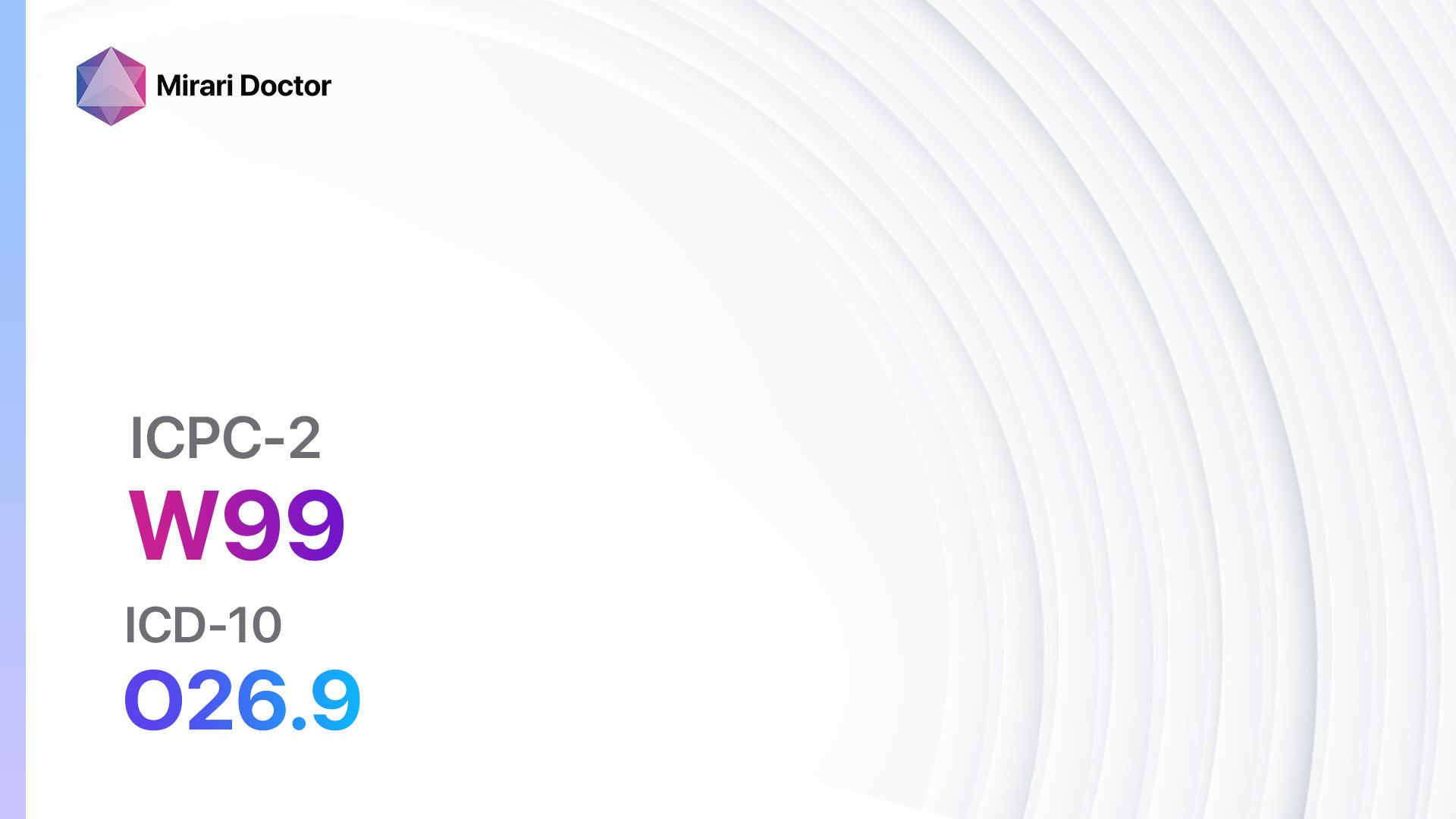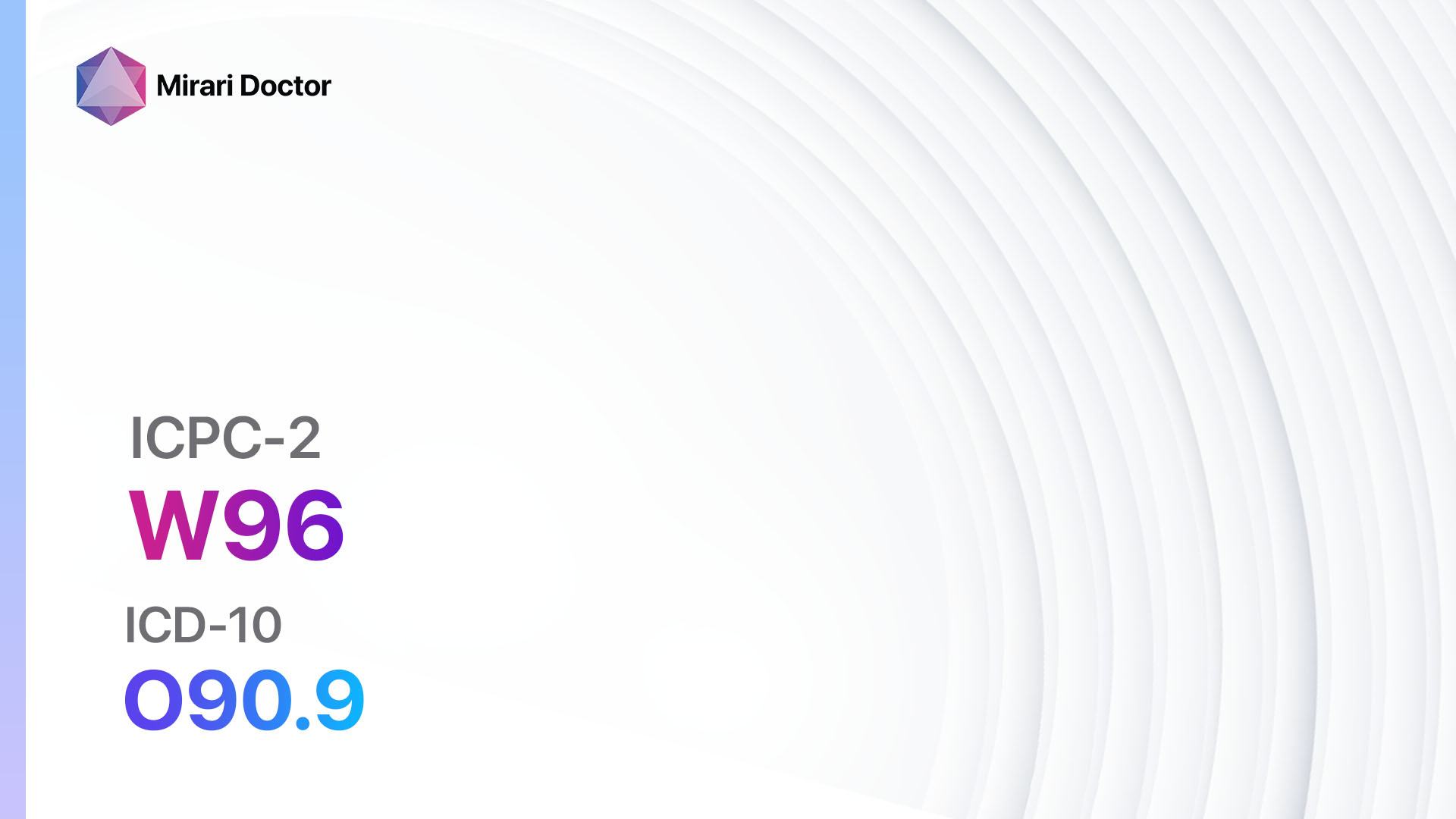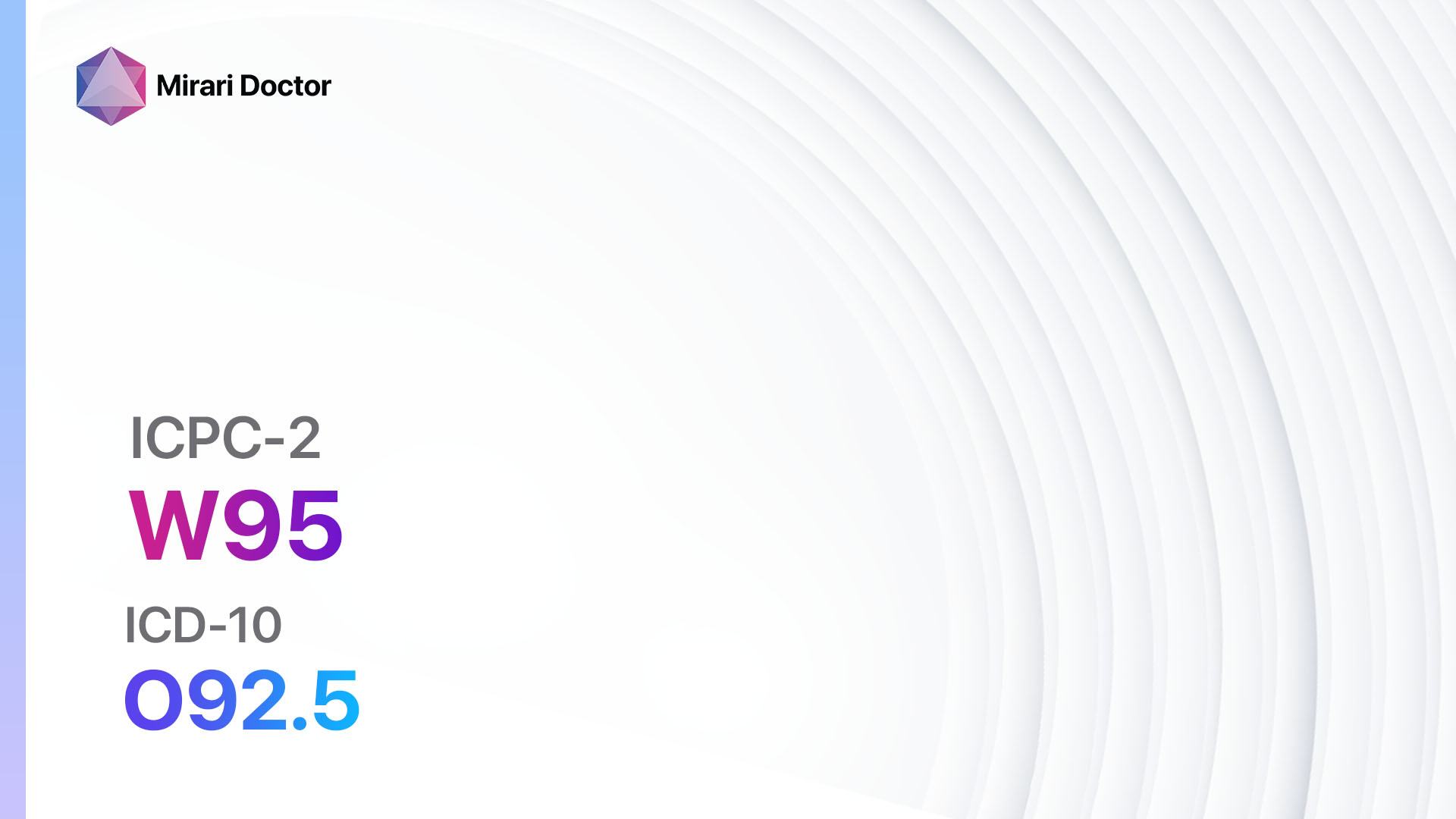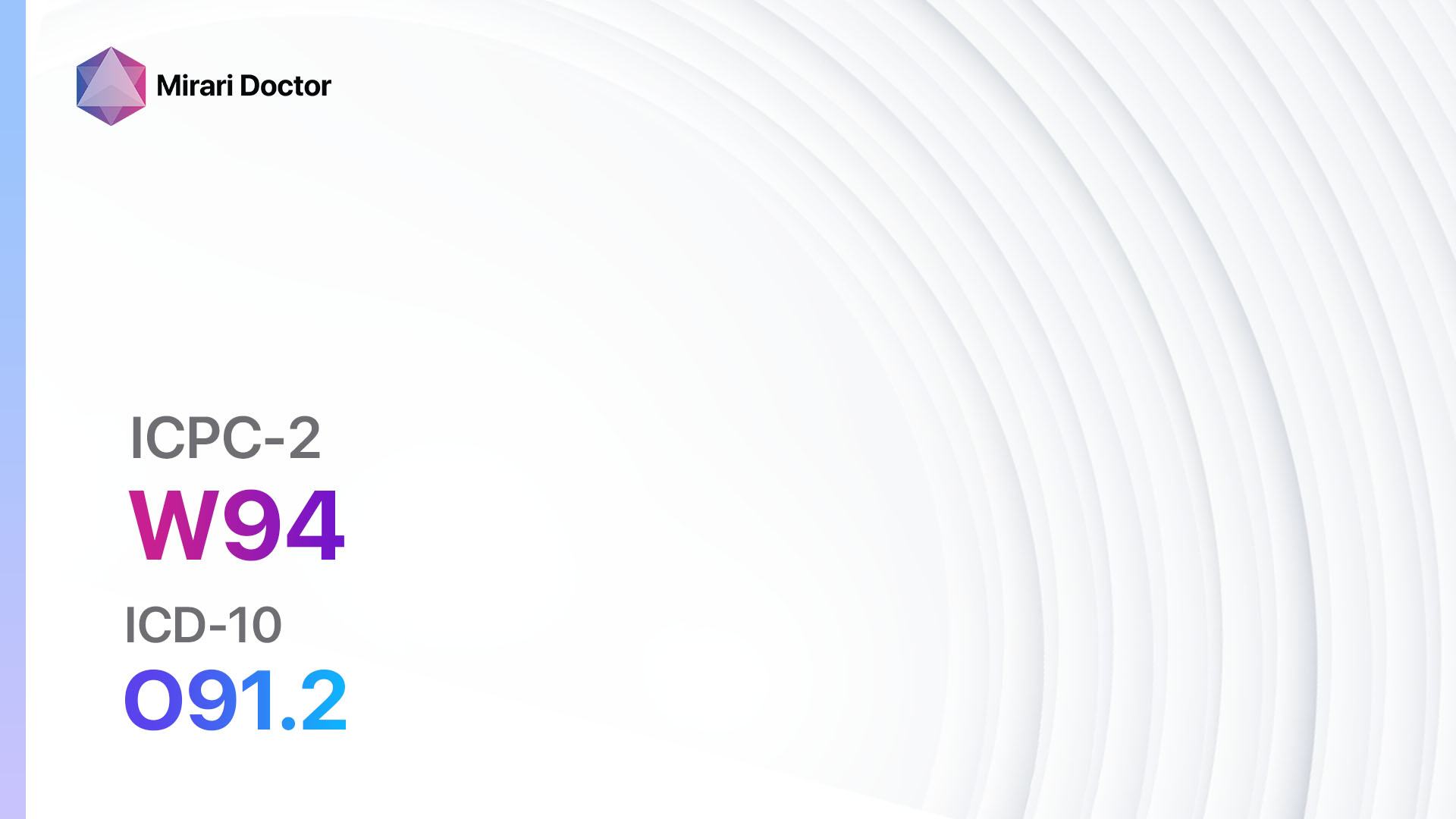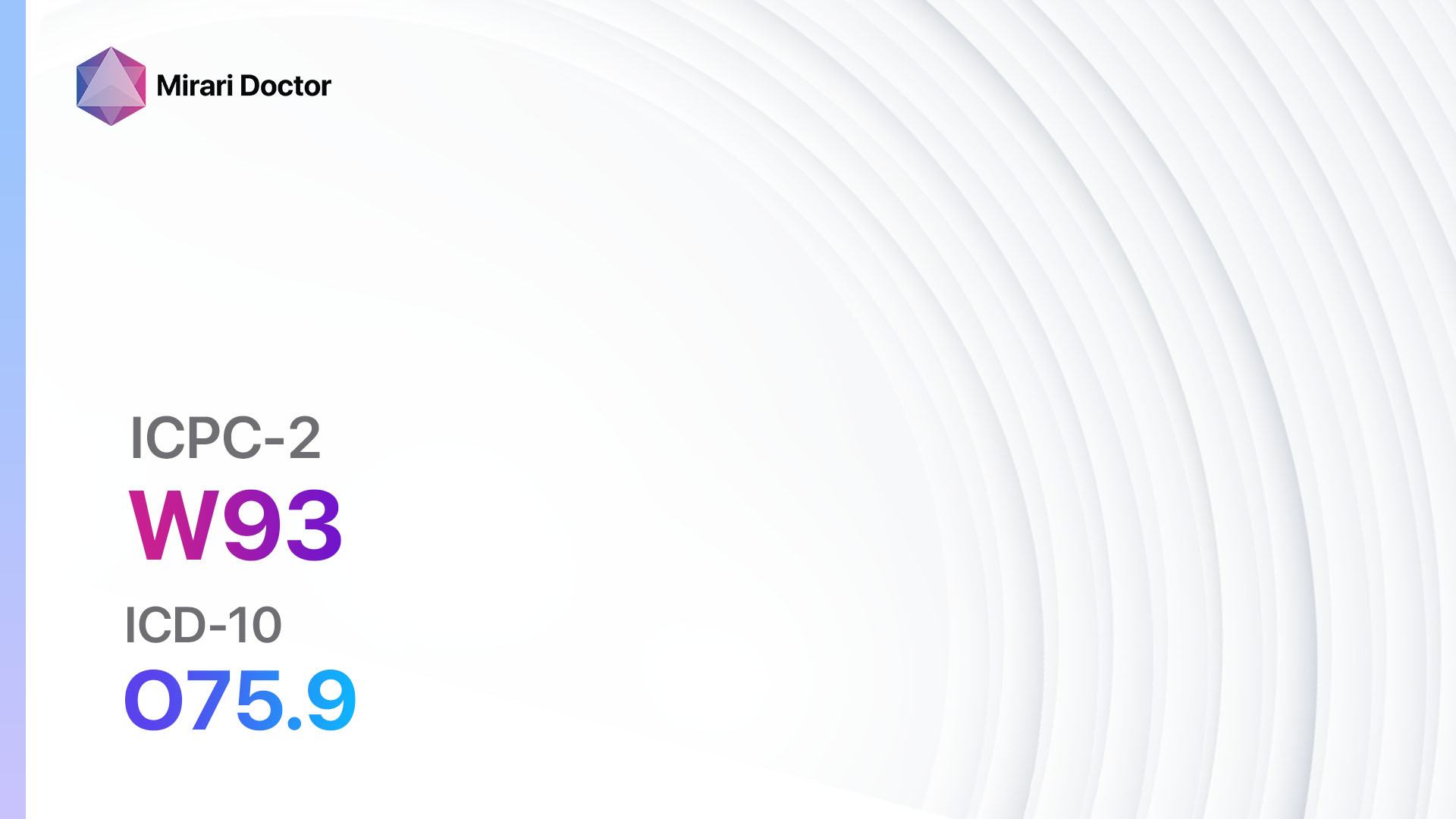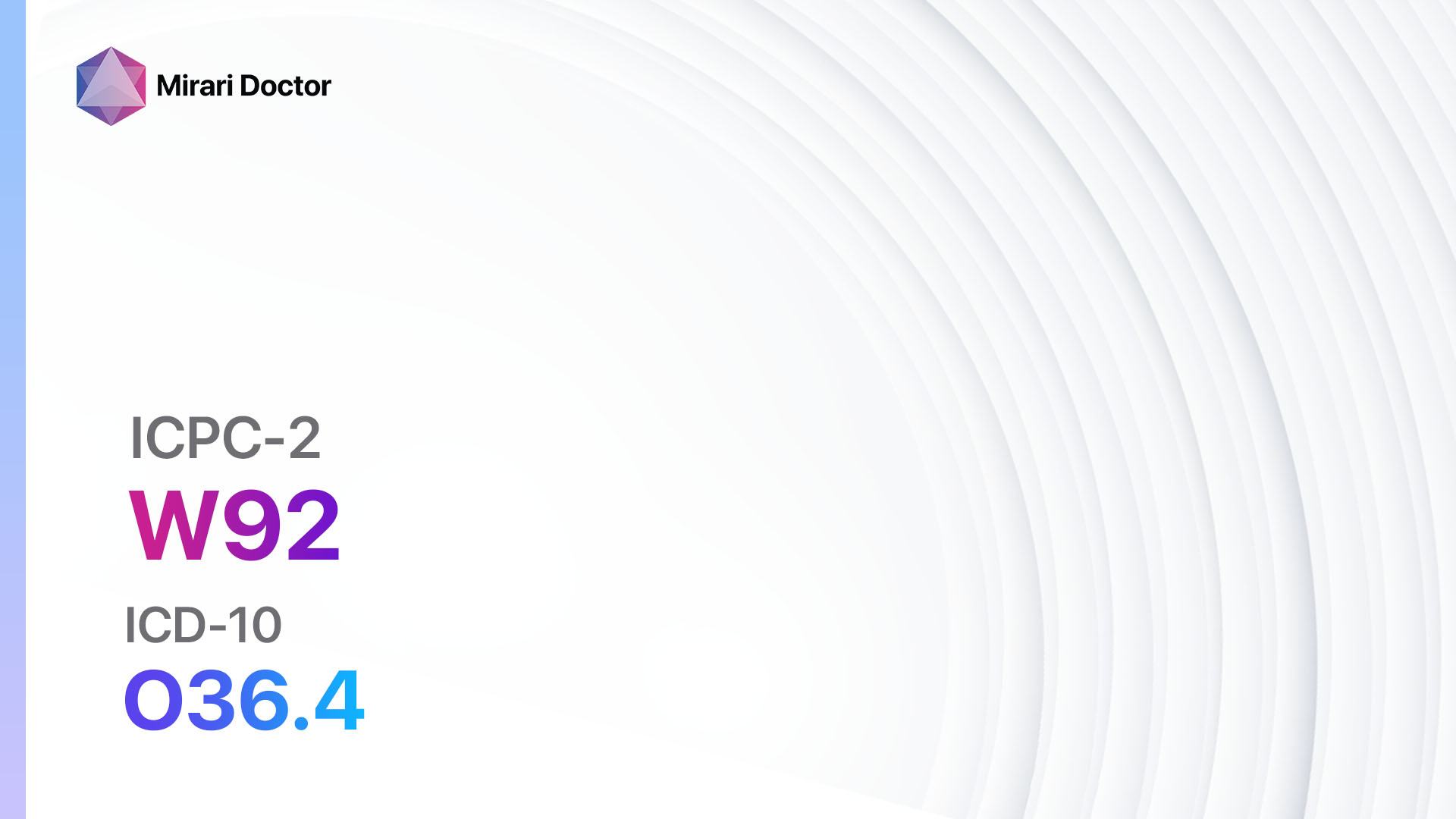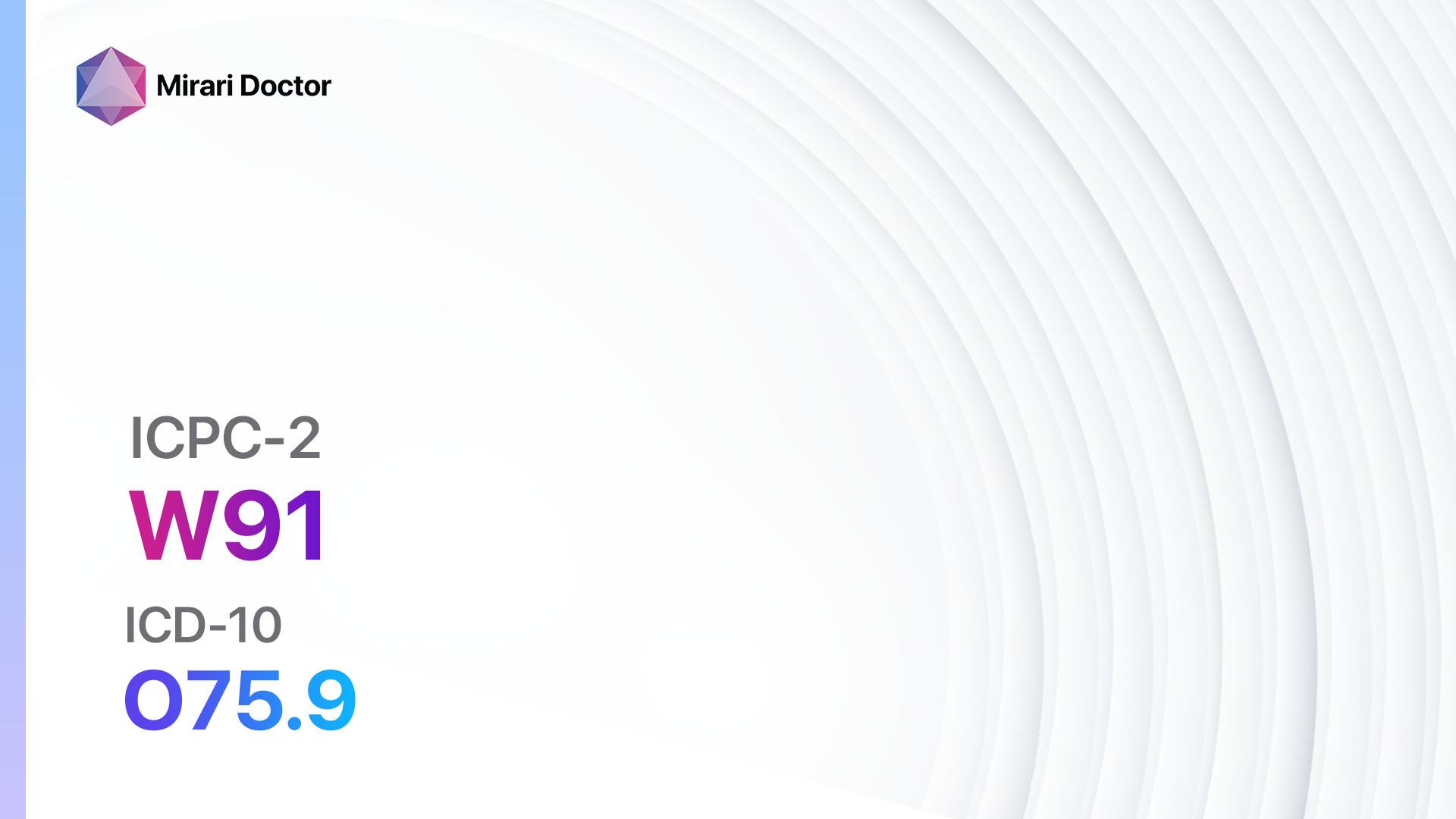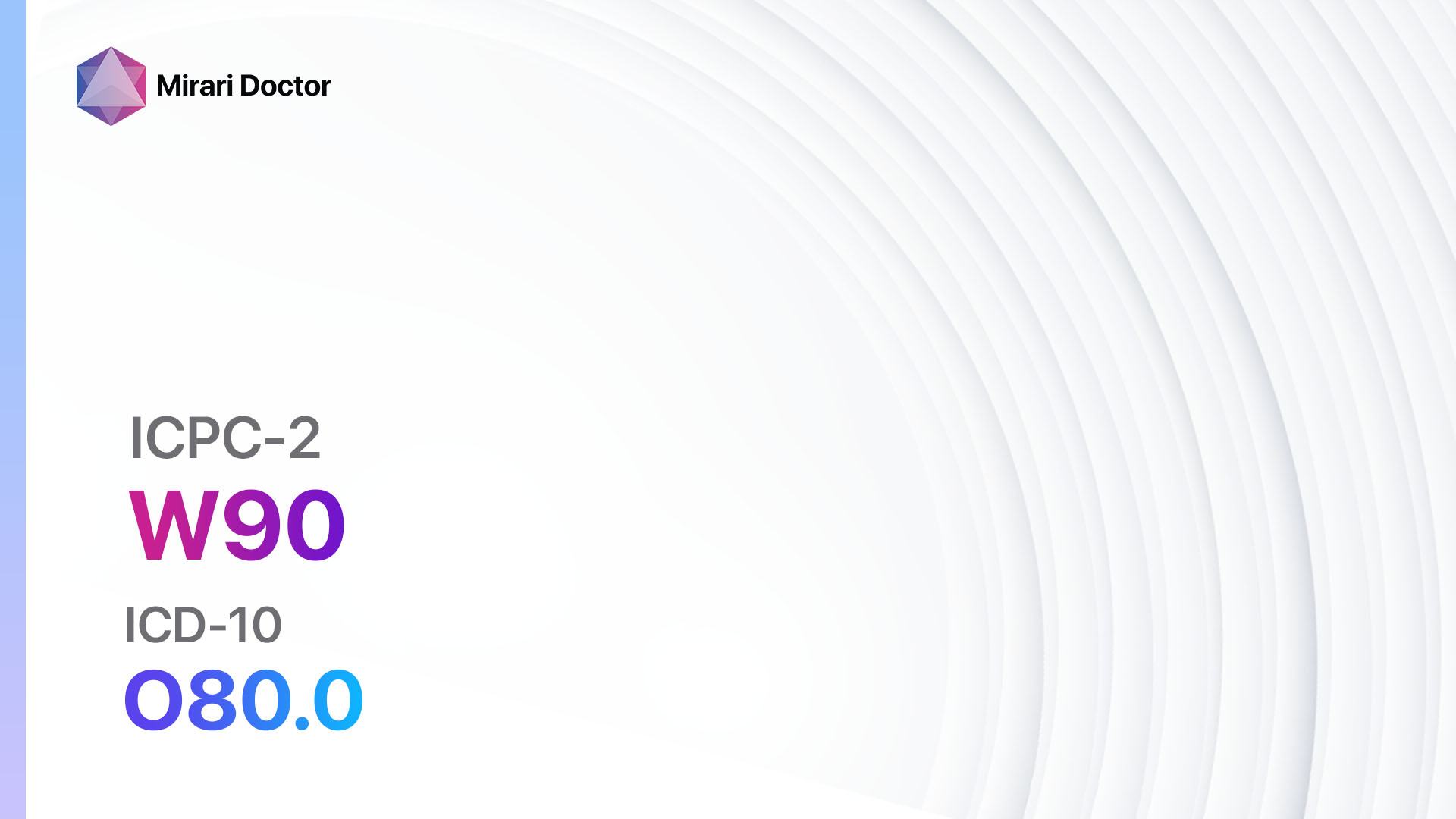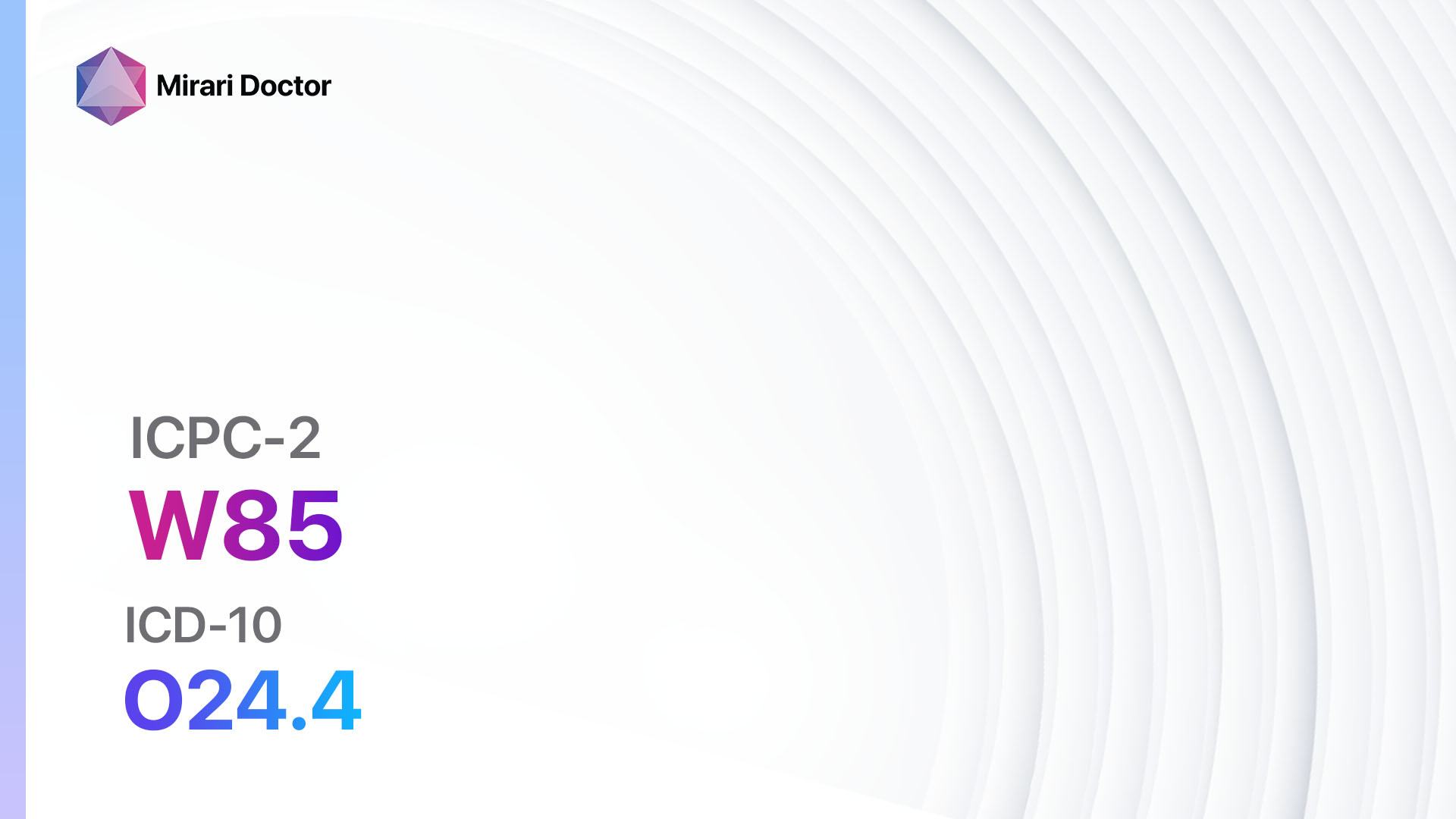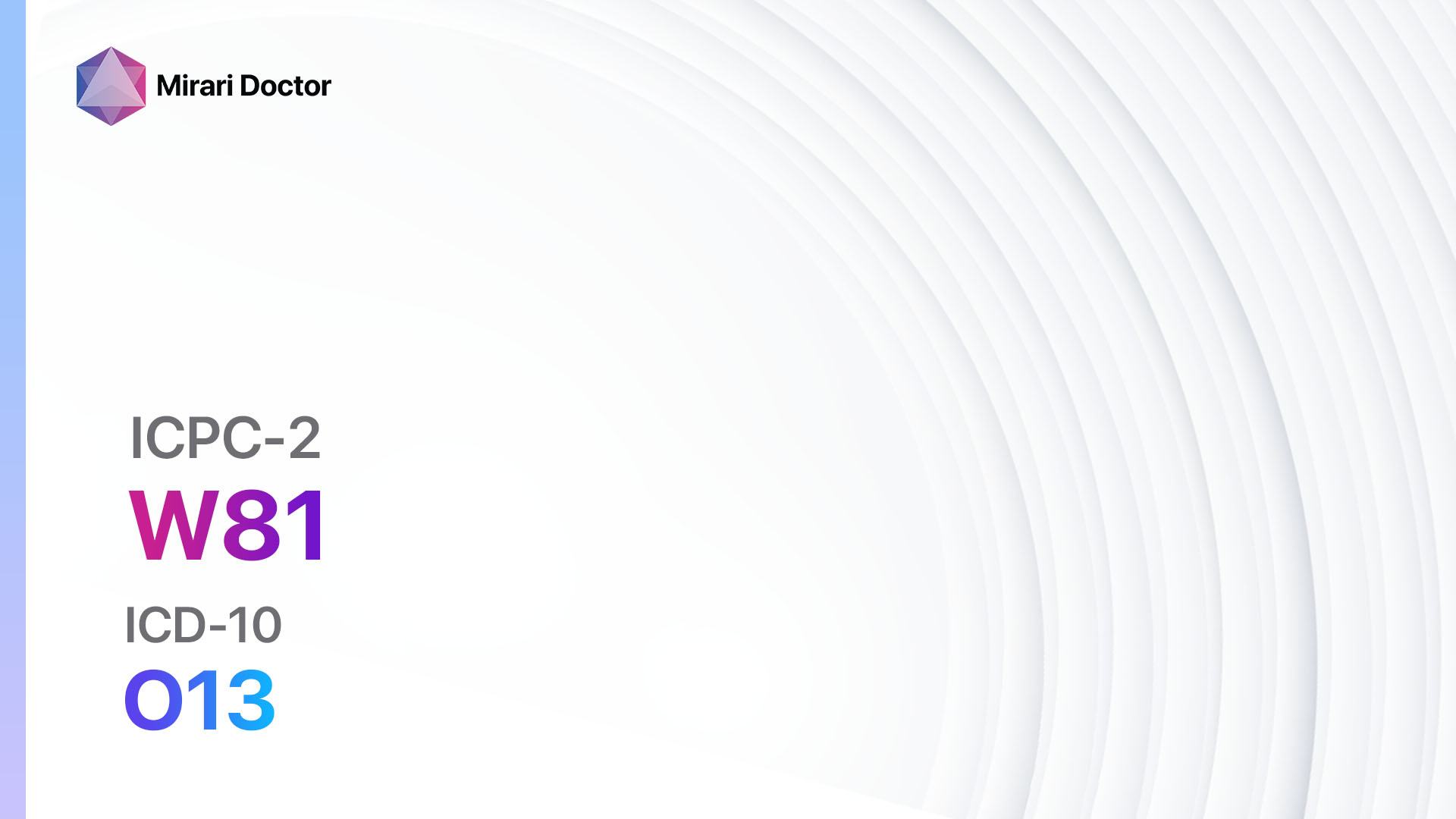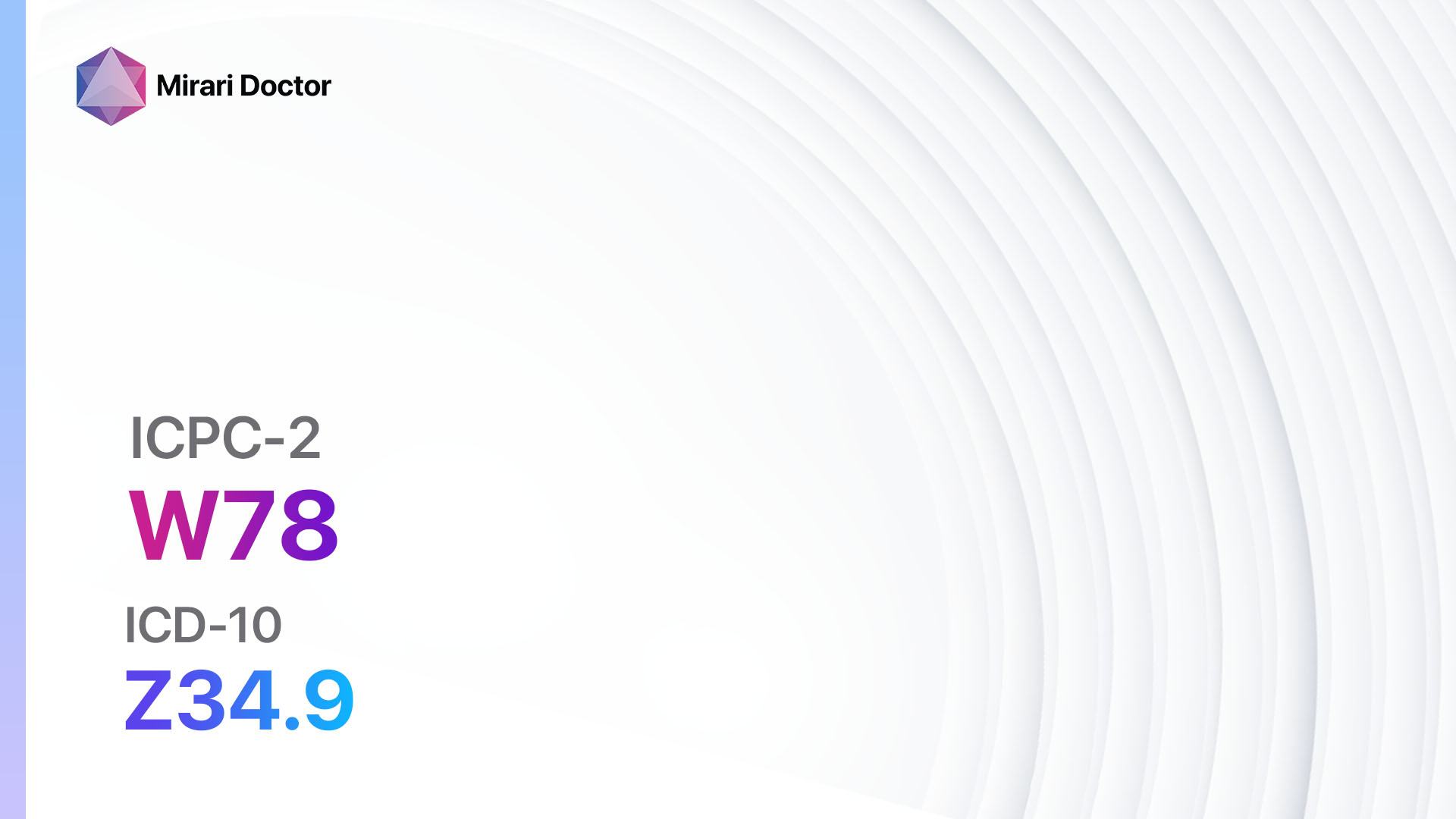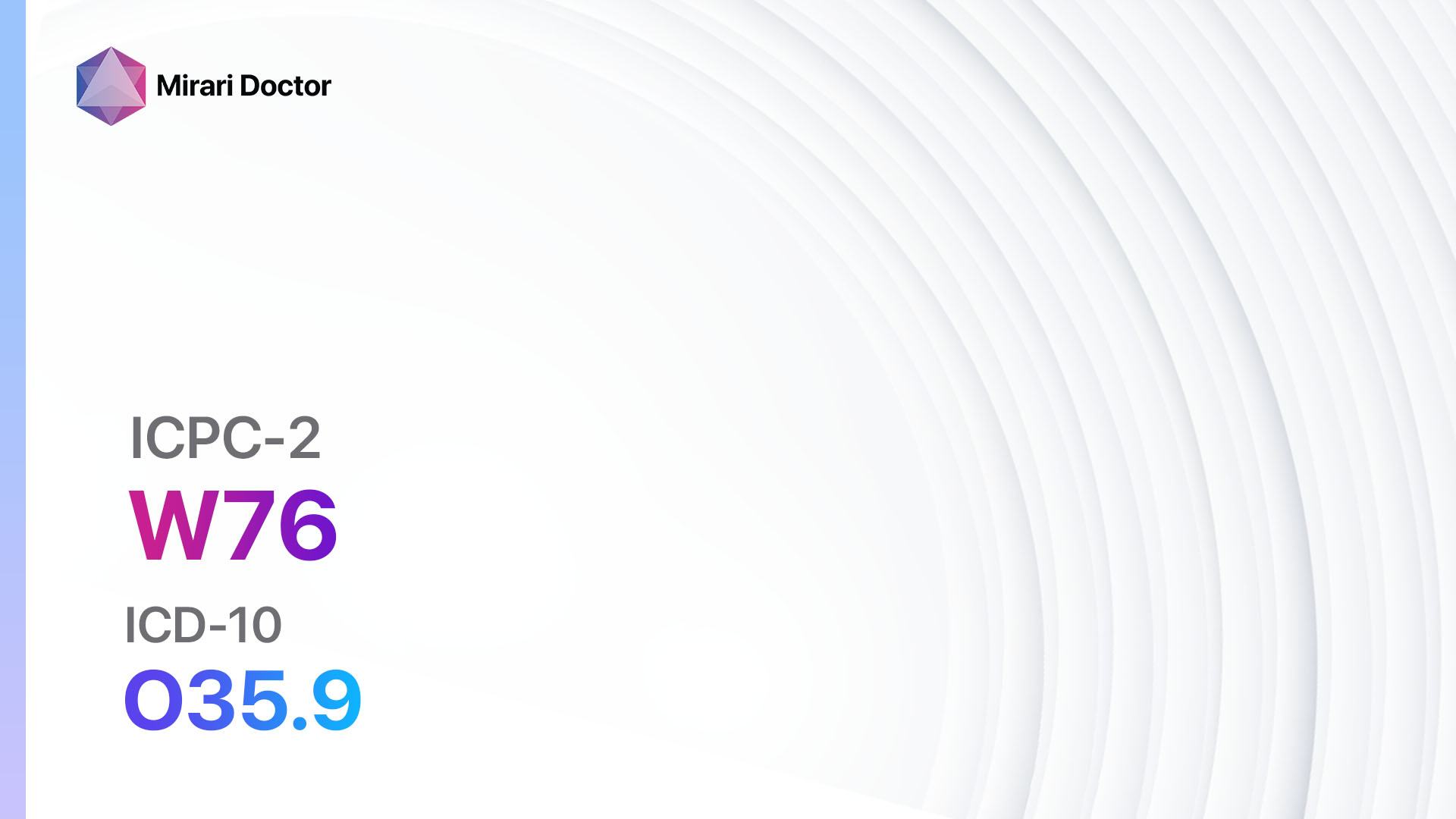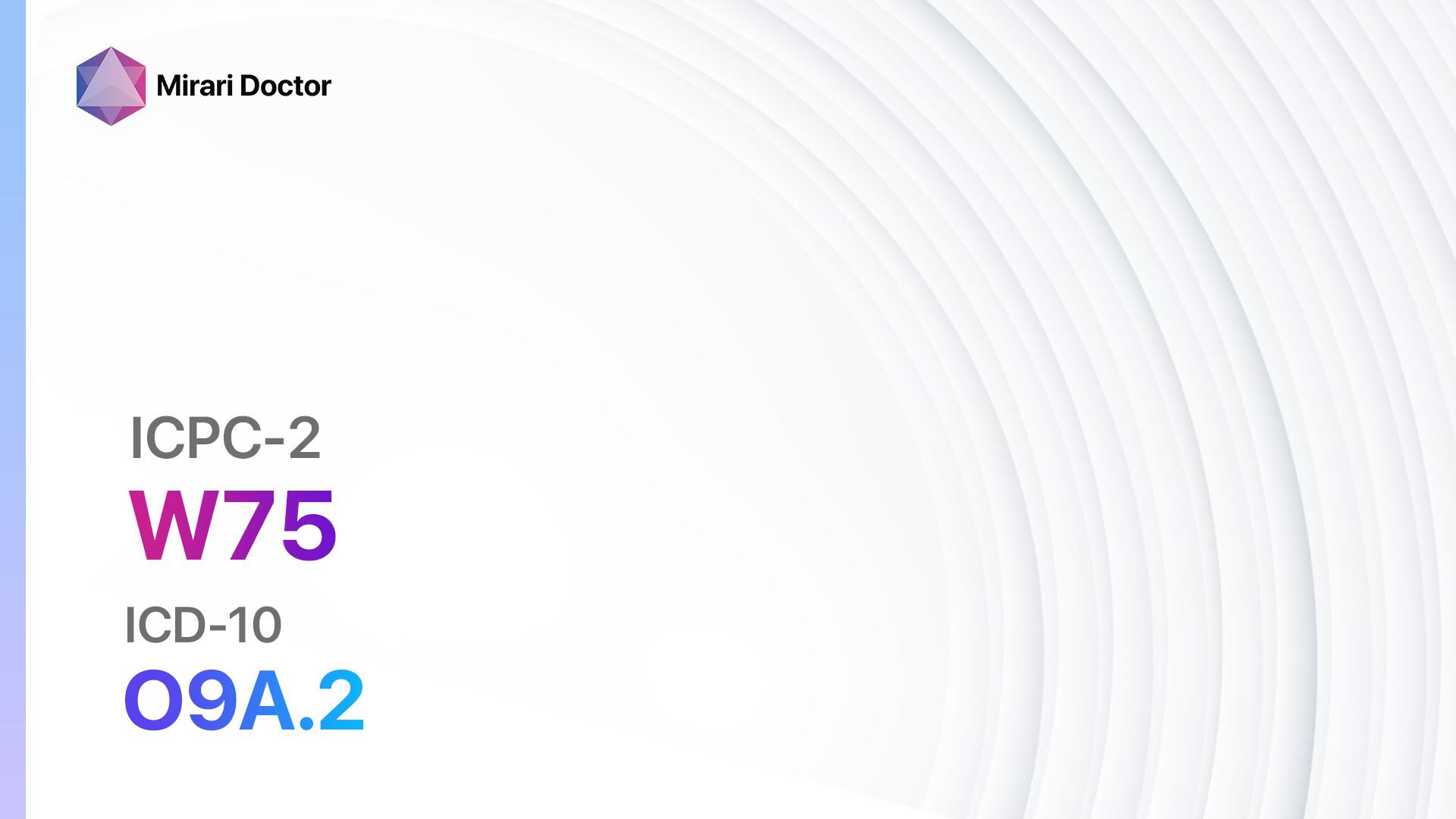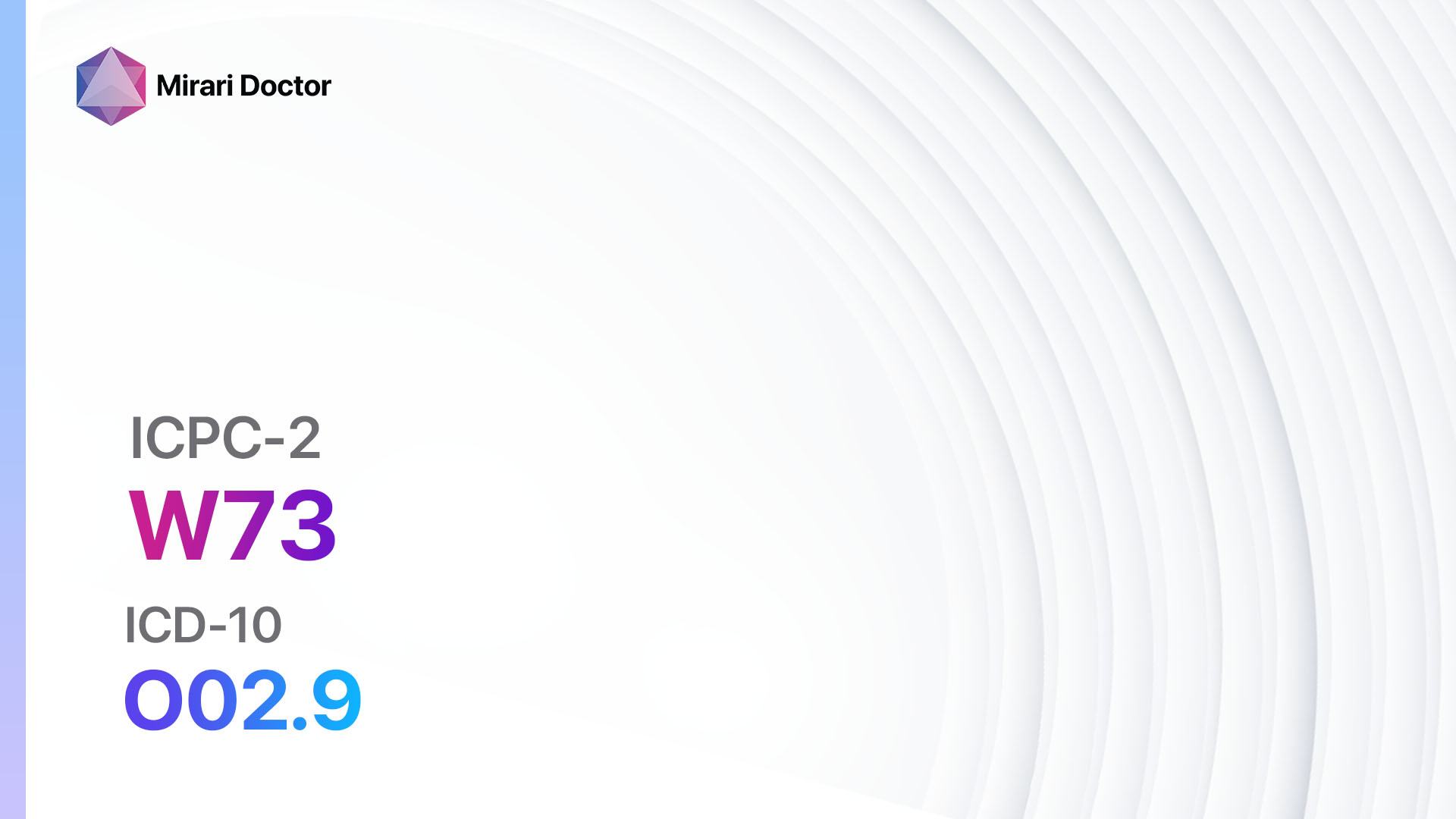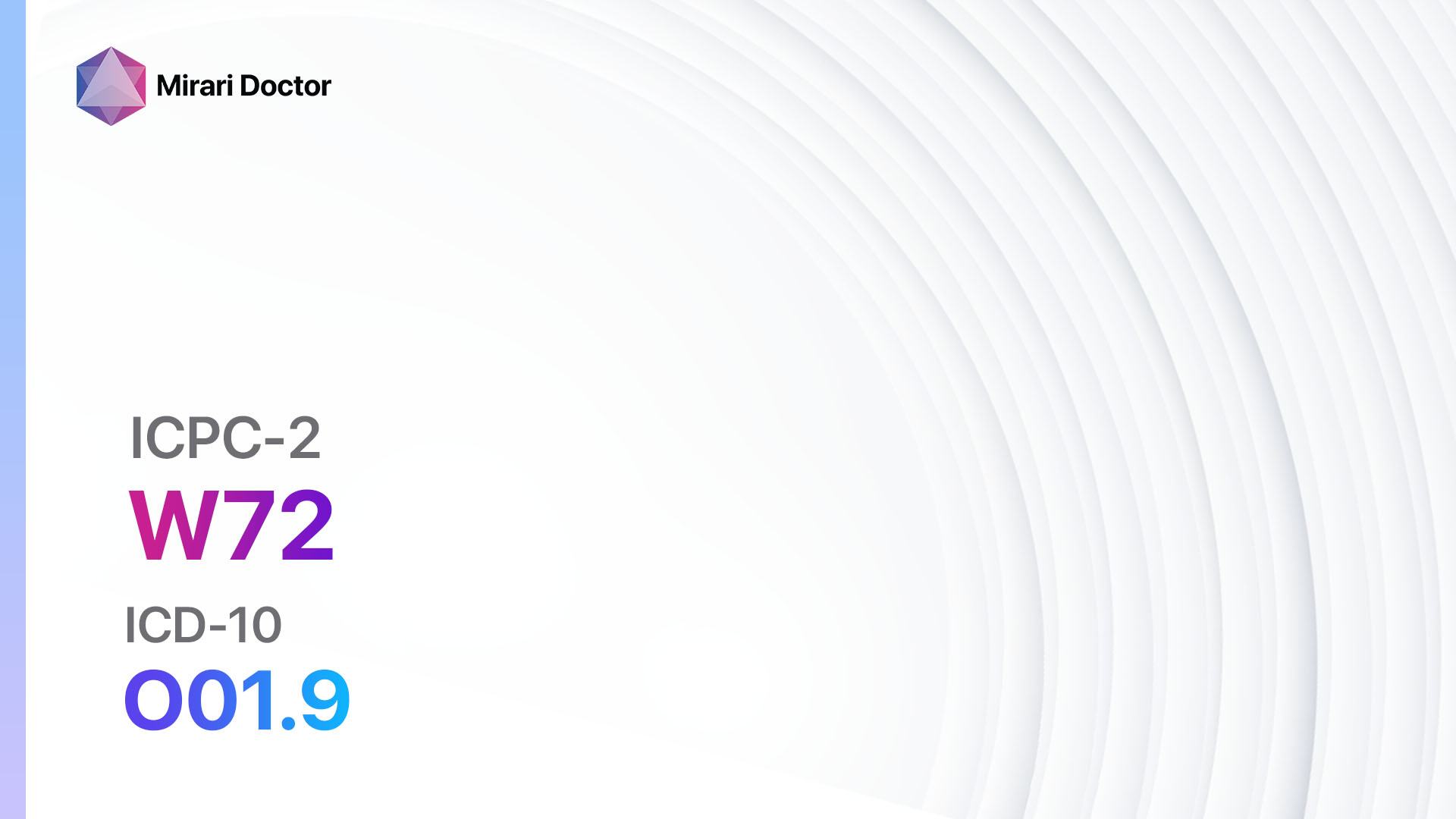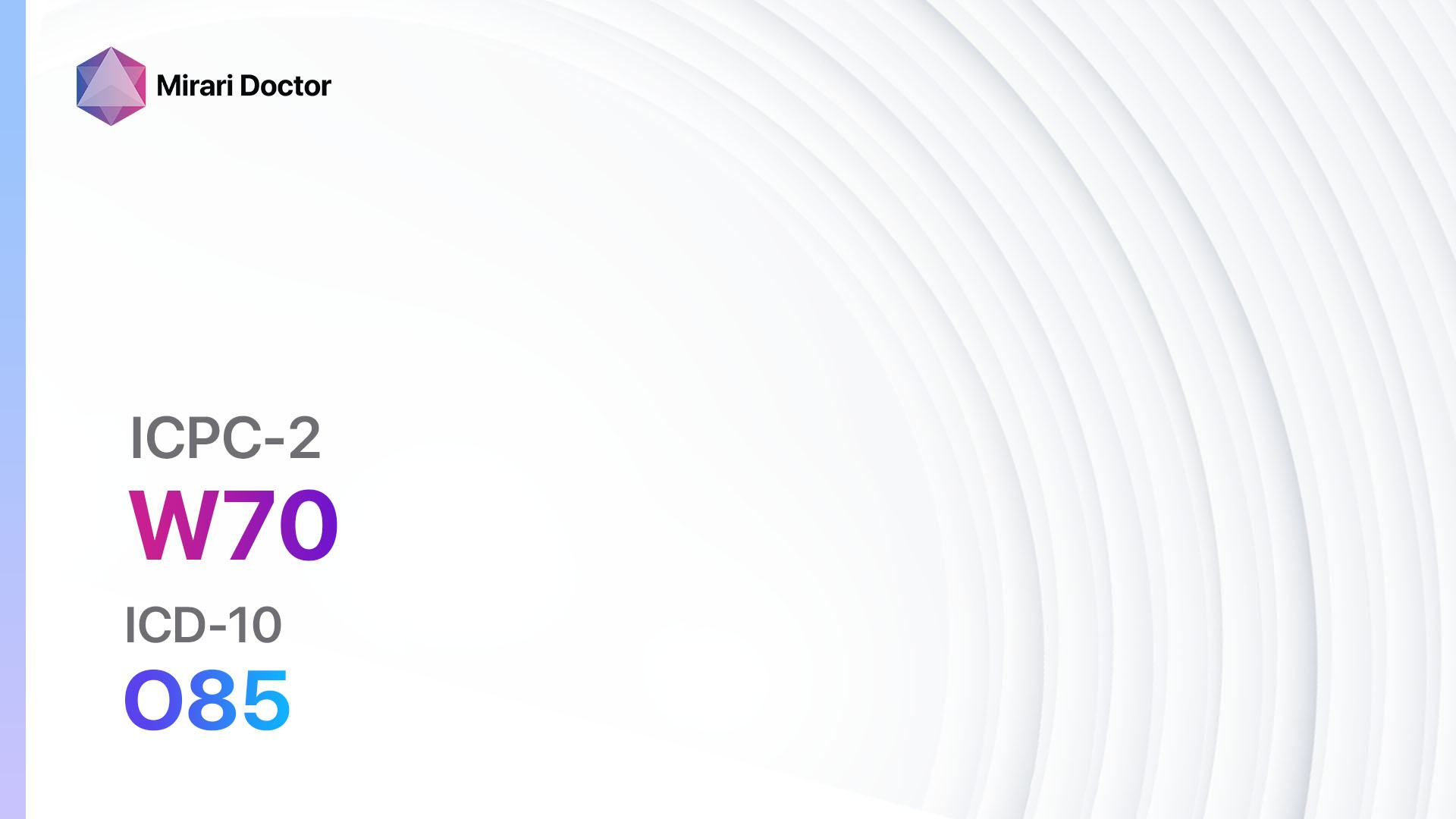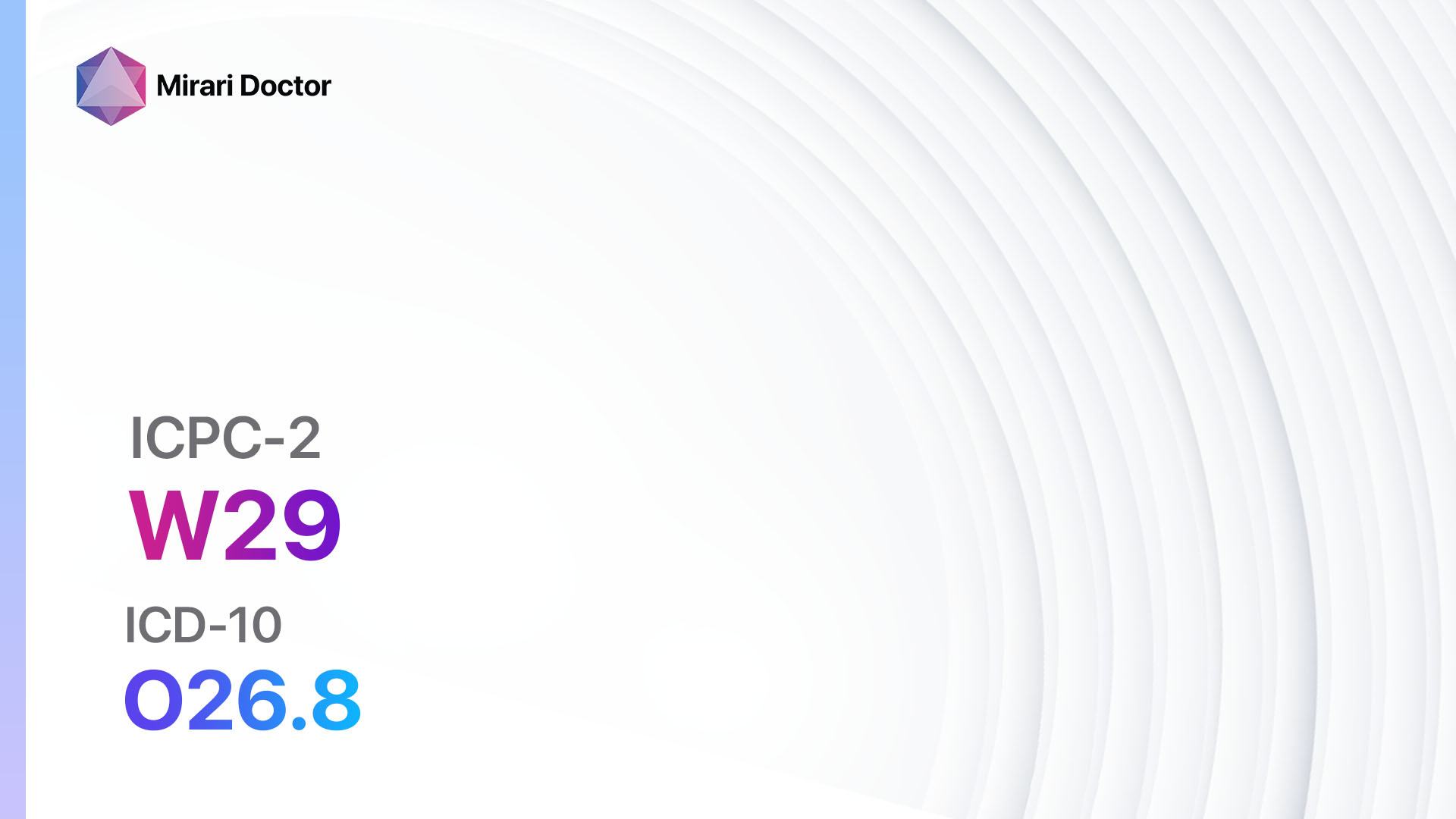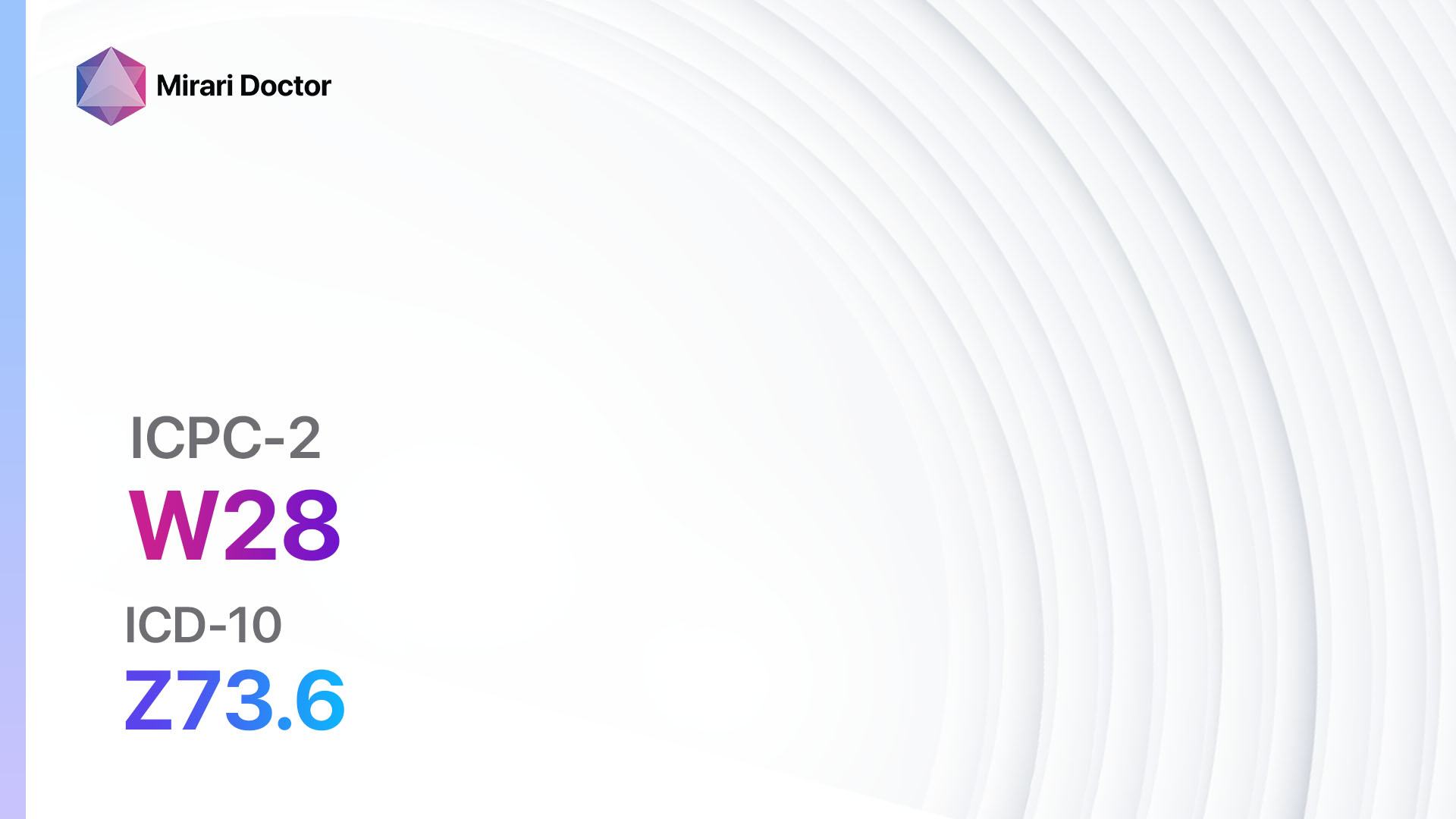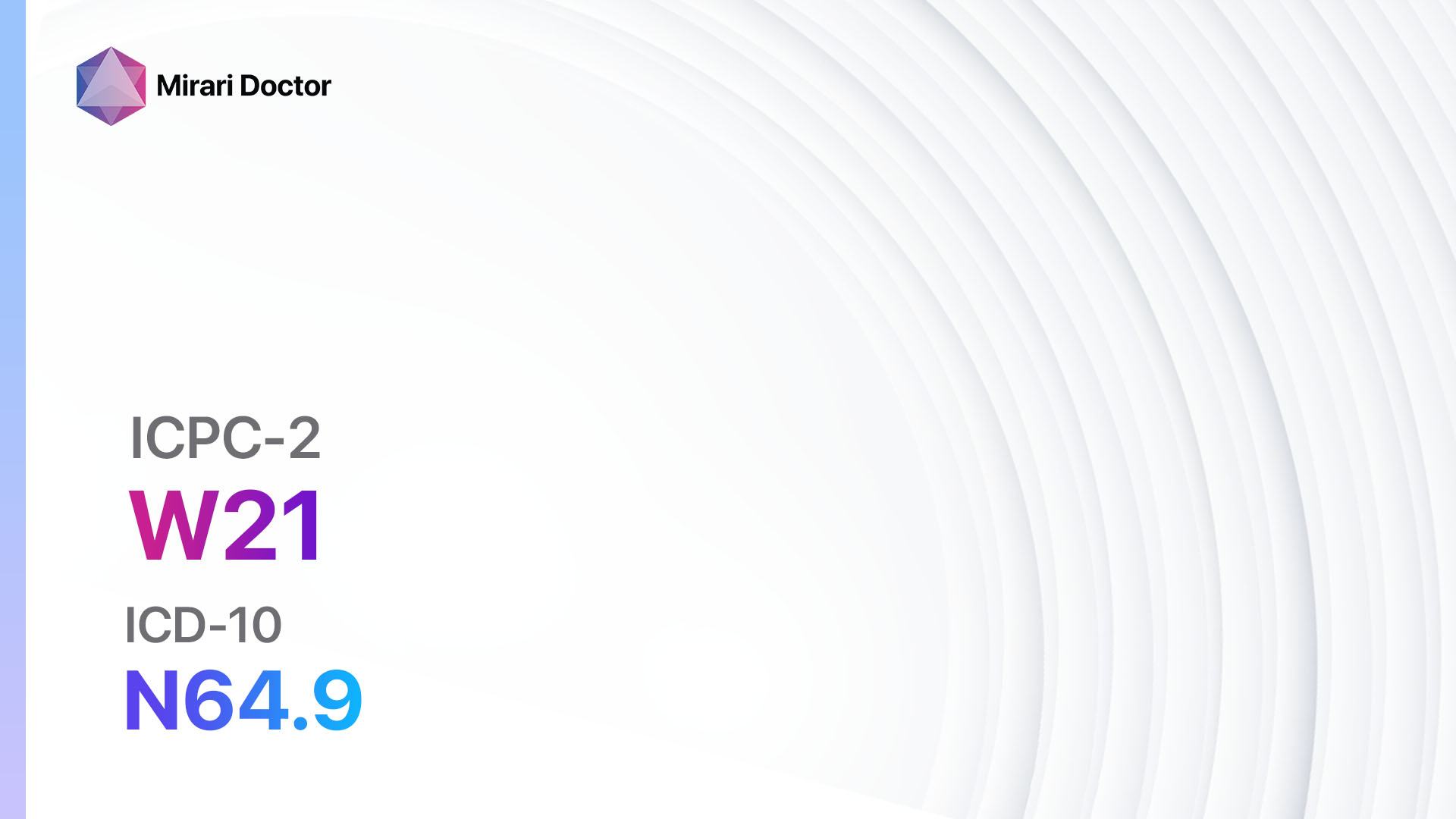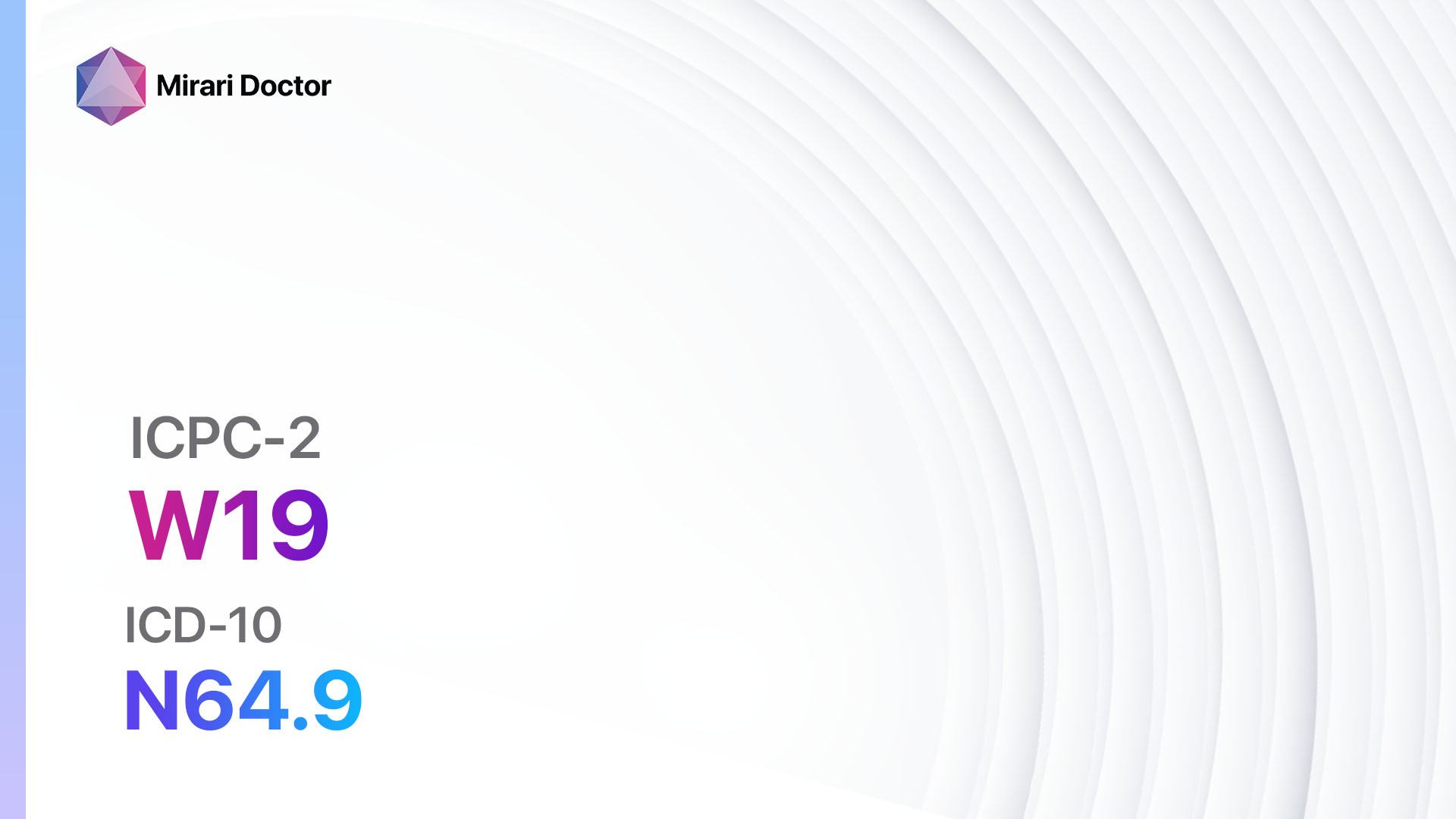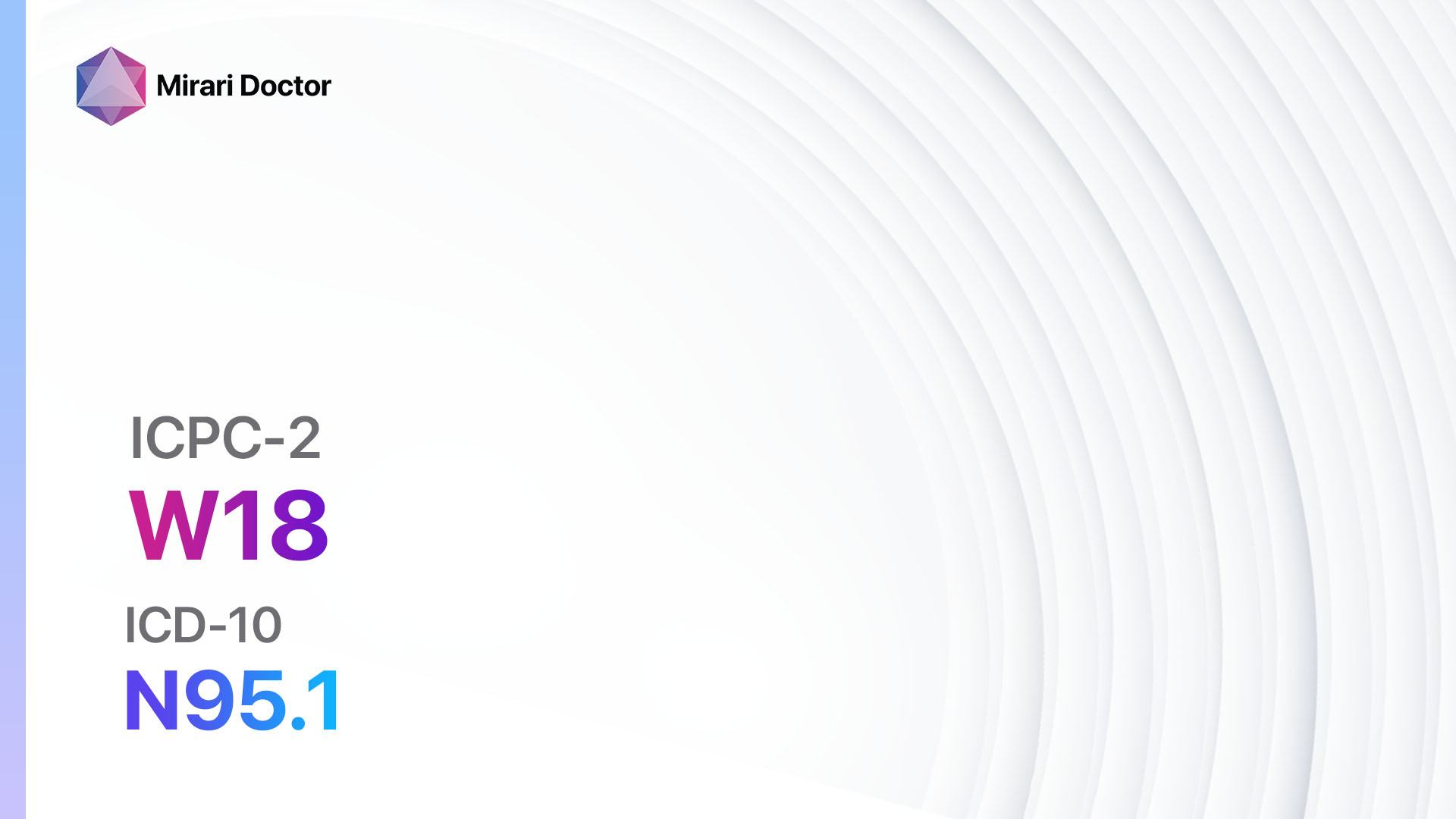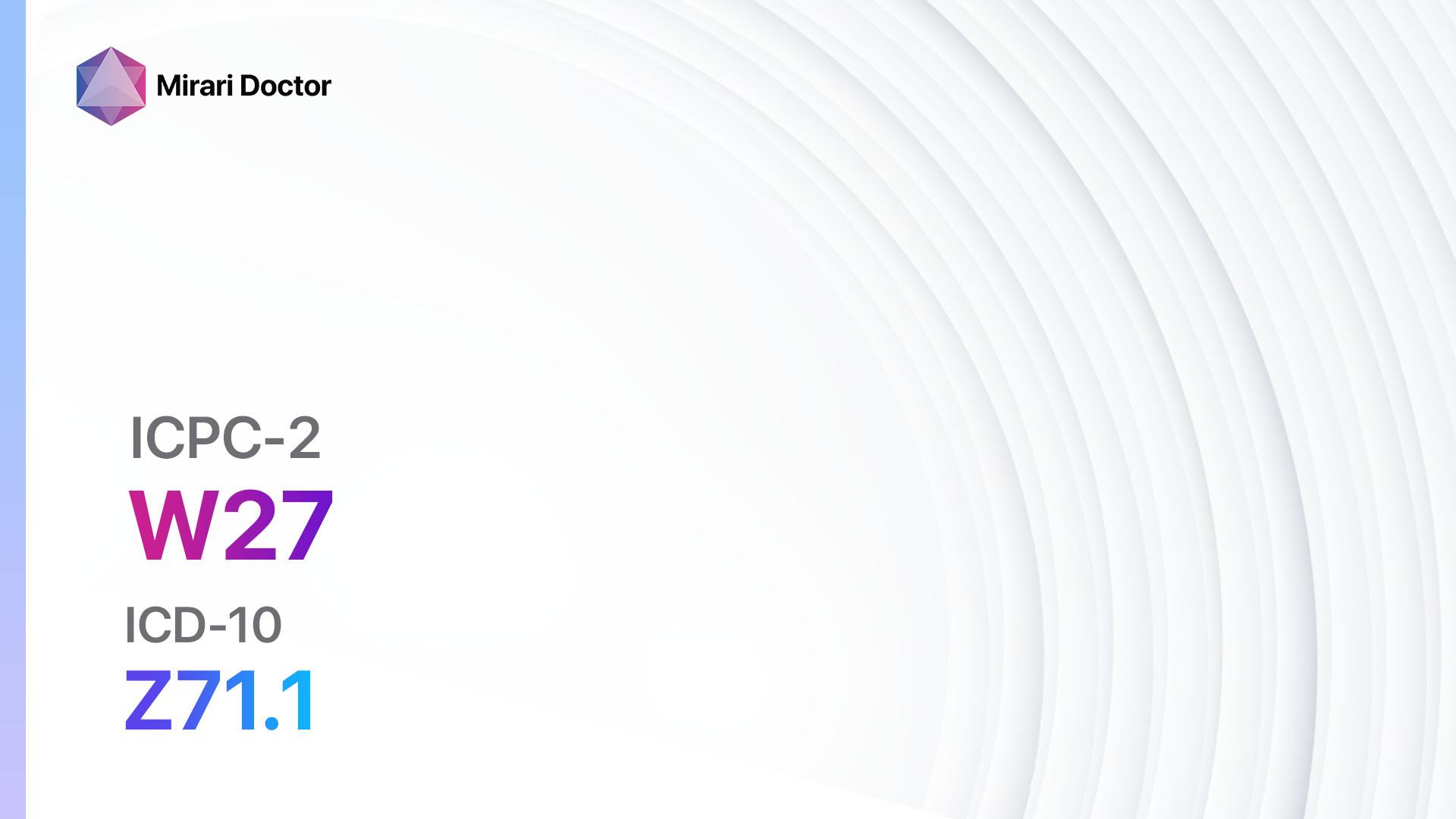
Introduction
Fear of complications during pregnancy is a common concern among expectant mothers. It is important to address these fears and provide appropriate guidance and support to ensure a healthy and stress-free pregnancy[1]. This guide aims to provide information on the symptoms, causes, diagnostic steps, possible interventions, and lifestyle changes that can help alleviate fears and promote a positive pregnancy experience.
Codes
- ICPC-2 Code: W27 Fear complication of pregnancy
- ICD-10 Code: Z71.1 Person with feared complaint in whom no diagnosis is made[2]
Symptoms
- Anxiety and worry about potential complications
- Excessive fear or concern about the health of the baby
- Difficulty sleeping or concentrating due to worry
- Increased heart rate or palpitations
- Sweating or trembling
- Shortness of breath or hyperventilation
- Nausea or gastrointestinal discomfort[3]
Causes
- Previous pregnancy complications or loss
- Personal or family history of medical conditions or complications during pregnancy
- Advanced maternal age
- Underlying medical conditions such as diabetes, hypertension, or thyroid disorders
- History of mental health conditions or anxiety disorders
- Lack of social support or stressful life events[4]
Diagnostic Steps
Medical History
- Gather information about the patient’s previous pregnancies, including any complications or losses
- Assess the patient’s medical history, including any pre-existing medical conditions or mental health disorders
- Inquire about the patient’s family history of pregnancy complications or medical conditions
- Evaluate the patient’s current social support system and any recent stressful life events[5]
Physical Examination
- Perform a thorough physical examination, including measurement of vital signs and assessment of general health
- Evaluate the patient’s abdomen for any abnormalities or signs of potential complications
- Assess the patient’s overall well-being and emotional state[6]
Laboratory Tests
- Complete blood count (CBC) to assess for anemia or other blood disorders
- Blood glucose test to screen for gestational diabetes
- Urine analysis to check for urinary tract infections or other abnormalities
- Thyroid function tests to evaluate thyroid function
- Screening for sexually transmitted infections (STIs) to prevent potential complications[7]
Diagnostic Imaging
- Ultrasound to assess fetal development and detect any abnormalities
- Doppler ultrasound to evaluate blood flow to the placenta and fetus
- Magnetic resonance imaging (MRI) in specific cases where further evaluation is needed[8]
Other Tests
- Genetic testing or counseling in cases of increased risk for genetic disorders
- Non-stress test or biophysical profile to assess fetal well-being
- Consultation with a specialist, such as a maternal-fetal medicine specialist or a perinatologist, for high-risk pregnancies[9]
Follow-up and Patient Education
- Schedule regular follow-up appointments to monitor the progress of the pregnancy and address any concerns or questions
- Provide patient education on healthy lifestyle choices, including proper nutrition, exercise, and stress management techniques
- Offer emotional support and resources for coping with anxiety and fear during pregnancy
- Refer to support groups or counseling services if needed[10]
Possible Interventions
Traditional Interventions
Medications:
Top 5 drugs for fear complications of pregnancy:
- Selective Serotonin Reuptake Inhibitors (SSRIs) (e.g., Sertraline, Fluoxetine):
- Cost: Generic versions can be $10-$50/month.
- Contraindications: Hypersensitivity to SSRIs, concurrent use of monoamine oxidase inhibitors (MAOIs).
- Side effects: Nausea, headache, insomnia.
- Severe side effects: Serotonin syndrome, suicidal thoughts.
- Drug interactions: MAOIs, other medications that increase serotonin levels.
- Warning: Close monitoring for worsening depression or suicidal thoughts.
- Benzodiazepines (e.g., Lorazepam, Alprazolam):
- Cost: Generic versions can be $10-$30/month.
- Contraindications: History of substance abuse, respiratory insufficiency.
- Side effects: Drowsiness, dizziness, confusion.
- Severe side effects: Respiratory depression, dependence.
- Drug interactions: Alcohol, other central nervous system depressants.
- Warning: Potential for addiction and withdrawal symptoms.
- Beta-Blockers (e.g., Propranolol, Metoprolol):
- Cost: Generic versions can be $10-$30/month.
- Contraindications: Severe bradycardia, heart block.
- Side effects: Fatigue, dizziness, low blood pressure.
- Severe side effects: Bronchospasm, heart failure.
- Drug interactions: Calcium channel blockers, insulin.
- Warning: Should not be abruptly stopped.
- Antidepressants (e.g., Bupropion, Mirtazapine):
- Cost: Generic versions can be $10-$50/month.
- Contraindications: Hypersensitivity to antidepressants, concurrent use of MAOIs.
- Side effects: Dry mouth, drowsiness, weight gain.
- Severe side effects: Suicidal thoughts, serotonin syndrome.
- Drug interactions: MAOIs, other medications that increase serotonin levels.
- Warning: Close monitoring for worsening depression or suicidal thoughts.
- Antipsychotics (e.g., Olanzapine, Quetiapine):
- Cost: Generic versions can be $10-$50/month.
- Contraindications: Hypersensitivity to antipsychotics, dementia-related psychosis.
- Side effects: Weight gain, sedation, extrapyramidal symptoms.
- Severe side effects: Neuroleptic malignant syndrome, tardive dyskinesia.
- Drug interactions: Other medications that cause sedation or interact with dopamine receptors.
- Warning: Increased risk of metabolic syndrome and diabetes.
Alternative Drugs:
- Cognitive Behavioral Therapy (CBT): A non-pharmacological approach that focuses on identifying and changing negative thought patterns and behaviors. Cost: Varies depending on the therapist and location.
- Mindfulness-Based Stress Reduction (MBSR): A technique that combines mindfulness meditation, body awareness, and yoga to reduce stress and anxiety. Cost: Varies depending on the program and location.
- Supportive Counseling: Regular sessions with a counselor or therapist to provide emotional support and guidance. Cost: Varies depending on the therapist and location.
- Relaxation Techniques: Techniques such as deep breathing, progressive muscle relaxation, and guided imagery can help reduce anxiety. Cost: Free or minimal cost for instructional materials or classes.
- Exercise: Regular physical activity, such as walking or prenatal yoga, can help reduce anxiety and improve overall well-being. Cost: Varies depending on the type of exercise and location.
Surgical Procedures
- There are no surgical procedures specifically indicated for fear of complications during pregnancy. However, in cases where there are underlying medical conditions or complications that require surgical intervention, appropriate procedures may be recommended. The cost of surgical procedures can vary significantly depending on the specific procedure and location.
Alternative Interventions
- Acupuncture: May help reduce anxiety and promote relaxation. Cost: $60-$120 per session.
- Massage therapy: Can help relieve stress and promote relaxation. Cost: $50-$100 per session.
- Yoga and meditation: Can help reduce anxiety and improve overall well-being. Cost: Varies depending on the class or program.
- Herbal supplements: Some herbs, such as chamomile or lavender, may have calming effects. Cost: Varies depending on the specific supplement.
- Support groups: Joining a support group with other expectant mothers can provide emotional support and reassurance. Cost: Varies depending on the group or organization.
Lifestyle Interventions
- Healthy diet: Eating a balanced diet rich in fruits, vegetables, whole grains, and lean proteins can support overall health and well-being during pregnancy. Cost: Varies depending on food choices and availability.
- Regular exercise: Engaging in moderate exercise, such as walking or swimming, can help reduce anxiety and improve mood. Cost: Free or minimal cost for activities such as walking.
- Stress management techniques: Practicing relaxation techniques, such as deep breathing or mindfulness, can help reduce stress and anxiety. Cost: Free or minimal cost for instructional materials or classes.
- Adequate sleep: Getting enough restful sleep is important for overall well-being and can help reduce anxiety. Cost: Free.
- Social support: Surrounding oneself with a supportive network of family and friends can provide emotional support and reassurance. Cost: Varies depending on social activities and availability.
It is important to note that the cost ranges provided are approximate and may vary depending on the location and availability of the interventions. It is recommended to consult with healthcare professionals or relevant resources for specific cost information and availability in your area.
Mirari Cold Plasma Alternative Intervention
Understanding Mirari Cold Plasma
- Safe and Non-Invasive Treatment: Mirari Cold Plasma is a safe and non-invasive treatment option for various skin conditions. It does not require incisions, minimizing the risk of scarring, bleeding, or tissue damage.
- Efficient Extraction of Foreign Bodies: Mirari Cold Plasma facilitates the removal of foreign bodies from the skin by degrading and dissociating organic matter, allowing easier access and extraction.
- Pain Reduction and Comfort: Mirari Cold Plasma has a local analgesic effect, providing pain relief during the treatment, making it more comfortable for the patient.
- Reduced Risk of Infection: Mirari Cold Plasma has antimicrobial properties, effectively killing bacteria and reducing the risk of infection.
- Accelerated Healing and Minimal Scarring: Mirari Cold Plasma stimulates wound healing and tissue regeneration, reducing healing time and minimizing the formation of scars.
Mirari Cold Plasma Prescription
Video instructions for using Mirari Cold Plasma Device – W27 Fear complication of pregnancy (ICD-10:Z71.1)
| Mild | Moderate | Severe |
| Mode setting: 2 (Wound Healing) Location: 2 (Prostate & Uterus) Morning: 15 minutes, Evening: 15 minutes | Mode setting: 2 (Wound Healing) Location: 2 (Prostate & Uterus) Morning: 30 minutes, Lunch: 30 minutes, Evening: 30 minutes | Mode setting: 2 (Wound Healing) Location: 2 (Prostate & Uterus) Morning: 30 minutes, Lunch: 30 minutes, Evening: 30 minutes |
| Mode setting: 7 (Immunotherapy) Location: 1 (Sacrum) Morning: 15 minutes, Evening: 15 minutes | Mode setting: 7 (Immunotherapy) Location: 1 (Sacrum) Morning: 30 minutes, Lunch: 30 minutes, Evening: 30 minutes | Mode setting: 7 (Immunotherapy) Location: 1 (Sacrum) Morning: 30 minutes, Lunch: 30 minutes, Evening: 30 minutes |
| Total Morning: 30 minutes approx. $5 USD, Evening: 30 minutes approx. $5 USD | Total Morning: 60 minutes approx. $10 USD, Lunch: 60 minutes approx. $10 USD, Evening: 60 minutes approx. $10 USD, | Total Morning: 60 minutes approx. $10 USD, Lunch: 60 minutes approx. $10 USD, Evening: 60 minutes approx. $10 USD, |
| Usual treatment for 7-60 days approx. $70USD – $600 USD | Usual treatment for 6-8 weeks approx. $1,260USD – $1,680 USD | Usual treatment for 3-6 months approx. $2,700 USD – $5,400 USD |
 |
|
Use the Mirari Cold Plasma device to treat Fear complications of pregnancy effectively.
WARNING: MIRARI COLD PLASMA IS DESIGNED FOR THE HUMAN BODY WITHOUT ANY ARTIFICIAL OR THIRD PARTY PRODUCTS. USE OF OTHER PRODUCTS IN COMBINATION WITH MIRARI COLD PLASMA MAY CAUSE UNPREDICTABLE EFFECTS, HARM OR INJURY. PLEASE CONSULT A MEDICAL PROFESSIONAL BEFORE COMBINING ANY OTHER PRODUCTS WITH USE OF MIRARI.
Step 1: Cleanse the Skin
- Start by cleaning the affected area of the skin with a gentle cleanser or mild soap and water. Gently pat the area dry with a clean towel.
Step 2: Prepare the Mirari Cold Plasma device
- Ensure that the Mirari Cold Plasma device is fully charged or has fresh batteries as per the manufacturer’s instructions. Make sure the device is clean and in good working condition.
- Switch on the Mirari device using the power button or by following the specific instructions provided with the device.
- Some Mirari devices may have adjustable settings for intensity or treatment duration. Follow the manufacturer’s instructions to select the appropriate settings based on your needs and the recommended guidelines.
Step 3: Apply the Device
- Place the Mirari device in direct contact with the affected area of the skin. Gently glide or hold the device over the skin surface, ensuring even coverage of the area experiencing.
- Slowly move the Mirari device in a circular motion or follow a specific pattern as indicated in the user manual. This helps ensure thorough treatment coverage.
Step 4: Monitor and Assess:
- Keep track of your progress and evaluate the effectiveness of the Mirari device in managing your Fear complications of pregnancy. If you have any concerns or notice any adverse reactions, consult with your health care professional.
Note
This guide is for informational purposes only and should not replace the advice of a medical professional. Always consult with your healthcare provider or a qualified medical professional for personal advice, diagnosis, or treatment. Do not solely rely on the information presented here for decisions about your health. Use of this information is at your own risk. The authors of this guide, nor any associated entities or platforms, are not responsible for any potential adverse effects or outcomes based on the content.
Mirari Cold Plasma System Disclaimer
- Purpose: The Mirari Cold Plasma System is a Class 2 medical device designed for use by trained healthcare professionals. It is registered for use in Thailand and Vietnam. It is not intended for use outside of these locations.
- Informational Use: The content and information provided with the device are for educational and informational purposes only. They are not a substitute for professional medical advice or care.
- Variable Outcomes: While the device is approved for specific uses, individual outcomes can differ. We do not assert or guarantee specific medical outcomes.
- Consultation: Prior to utilizing the device or making decisions based on its content, it is essential to consult with a Certified Mirari Tele-Therapist and your medical healthcare provider regarding specific protocols.
- Liability: By using this device, users are acknowledging and accepting all potential risks. Neither the manufacturer nor the distributor will be held accountable for any adverse reactions, injuries, or damages stemming from its use.
- Geographical Availability: This device has received approval for designated purposes by the Thai and Vietnam FDA. As of now, outside of Thailand and Vietnam, the Mirari Cold Plasma System is not available for purchase or use.
References
- American College of Obstetricians and Gynecologists. (2018). Morning Sickness: Nausea and Vomiting of Pregnancy. Retrieved from//www.acog.org/womens-health/faqs/morning-sickness-nausea-and-vomiting-of-pregnancy
- World Health Organization. International Statistical Classification of Diseases and Related Health Problems (ICD-10). 2019.
- Mayo Clinic. (2021). Pregnancy anxiety: Tips to manage your symptoms. Retrieved from//www.mayoclinic.org/healthy-lifestyle/pregnancy-week-by-week/in-depth/pregnancy-anxiety/art-20044901
- Nicolaou N, et al. Genetic, environmental, and epigenetic factors involved in CAKUT. Nature Reviews Nephrology. 2015;11(12):720-731.
- Chevalier RL. Congenital Anomalies of the Kidneys and Urinary Tract. NeoReviews. 2019;20(5):e280-e289.
- Morey AF, et al. Urotrauma: AUA guideline. Journal of Urology. 2014;192(2):327-335.
- Summerton DJ, et al. EAU guidelines on iatrogenic trauma. European Urology. 2012;62(4):628-639.
- Lange-Sperandio B, et al. Congenital Anomalies of the Kidney and Urinary Tract: A Continuum of Care. Seminars in Nephrology. 2023;43(5):551-563.
- Stonebrook E, et al. Congenital Anomalies of the Kidney and Urinary Tract: A Clinical Review. Pediatric Nephrology. 2020;35(5):753-761.
- American Pregnancy Association. (2021). Pregnancy Concerns. Retrieved from//americanpregnancy.org/healthy-pregnancy/pregnancy-concerns/
Related articles
Made in USA


